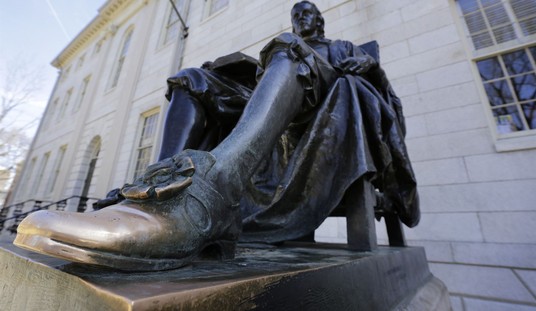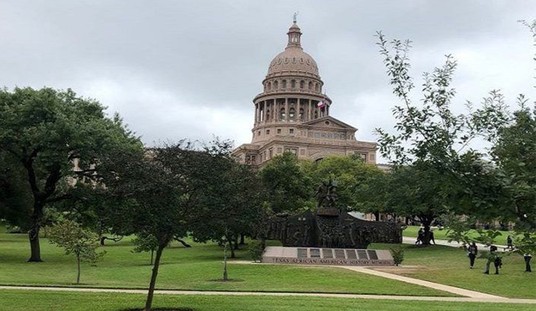Earlier this week, the US Supreme Court finally addressed a statewide directive in California that forbade churches from holding services.
More than eight months after the Supreme Court declined to intervene in a California church’s challenge to the state’s stay-at-home orders issued as a result of the COVID-19 crisis, the justices late Friday night gave the go-ahead for California churches to resume indoor worship services. The court was divided in its ruling, which will still allow the state to enforce its ban on singing and chanting and limit attendance at 25% of capacity.
Be sure to read our commentary on this decision, SCOTUS Slaps Down California’s Church Ban, and the Libs Are Freaking the Heck Out and The Supreme Court’s Decision to Block California’s Ban on In-Person Worship Will Create Pressure on Dems to Pack the Court.
The liberals were pretty much in favor of letting “scientists” do whatever the hell they demanded.
Justice Elena Kagan dissented from the decision, in a six-page opinion joined by Justices Stephen Breyer and Sonia Sotomayor. She complained that although the justices “are not scientists” and do not “know much about public health policy,” the majority had nonetheless opted to displace “the judgments of experts about how to respond to a raging pandemic.” “Under the Court’s injunction,” Kagan lamented, California is required to “treat worship services like secular activities that pose a much lesser danger. That mandate defies our caselaw, exceeds our judicial role, and risks worsening the pandemic.” “No one can know, from the Court’s 19-line order, exactly why” the court reaches that conclusion, Kagan observed: “Is it that the Court does not believe the science, or does it think even the best science must give way?”
Kagan concluded by suggesting that Friday’s order raises questions – about when limits on capacity are allowed, and whether an indoor ban on worship services is ever permissible, for example – that may resurface in future cases. “The Court’s decision,” she posited, “leaves state policymakers adrift, in California and elsewhere. It is difficult enough in a predictable legal environment to craft COVID policies that keep communities safe. That task becomes harder still when officials must guess which restrictions this Court will choose to strike down,” she wrote.
Kagan is actually very wrong for a reason I will discuss in a moment.
This is the reasoning of the six votes to allow Californians to worship in public. Chief Justice John Roberts tried to straddle the rail and would have done severe damage to his manhood did such a thing even exist:
In his own opinion, Chief Justice John Roberts reiterated a view that he expressed in an earlier challenge by South Bay United Pentecostal Church: the idea that “federal courts owe significant deference to politically accountable officials with the ‘background, competence, and expertise to assess public health.’” As a result, Roberts explained, he saw no reason to overturn the state’s determination that singing indoors creates a greater risk of COVID-19 transmission. However, he continued, the ban on indoor worship services “appears to reflect not expertise or discretion, but instead insufficient appreciation of the interests at stake.” “Deference, though broad,” he concluded, “has its limits.”
Kavanaugh and Coney Barrett were a little more forceful.
She explained that it was the churches’ responsibility to show that they were entitled to relief from the ban on singing, and that – at least in her view – they had not done so. As a result, she wrote, it was not clear whether the ban on singing and chanting applies only to religious services, or whether it applies more broadly – for example, to Hollywood productions. The one-paragraph opinion was the first signed opinion that Barrett has issued since joining the Supreme Court in October.
The opinion of Thomas, Alito, and Gorsuch was pretty much on target.
Justices Clarence Thomas and Neil Gorsuch indicated that they would have given the churches everything that they had asked for – that is, allowed them to reopen immediately without any limitations. In a statement that was also joined by Justice Samuel Alito, they suggested that it is not difficult to determine in this case whether California has singled out religion for special, and more stringent, treatment. They acknowledged that the state “has a compelling interest in reducing” the risk of transmitting COVID-19, but they expressed skepticism that the state’s justifications for placing restrictions on worship services – that they involve people from different households meeting together for extended periods of time and singing – are unique to worship services.
Ever since this pandemic crisis was imposed upon us, I have argued that the regulations imposed upon an initially supine but now restive America had little to nothing to do with public health and everything do with arrogating power to bureaucrats (not the “government”), creating administrative carveout to the Bill of Rights. If a “public health emergency” brought on by a virus that is not terribly dangerous to anyone who is not already sick or suffering from conditions that would qualify as comorbidities trumps the black-letter right to assemble and to worship, then the First Amendment and Second Amendment have effectively ceased to exist. At least two state governors have declared “racism” to be a “public health emergency” Inevitably, gun violence will also attain that status. It doesn’t take a particularly inventive person to see how the ability to declare anything you don’t like a “public health emergency” is going to be weaponized to suppress any kind of dissent. If a “public health emergency” due to the Wuhan virus can keep a choir from singing in church, then declaring “homophobia” a “public health emergency” and surely regulate what is said in the sermon and which parts of Sacred Scripture are read. We can’t have that old hater, St. Paul, getting people upset, can we?
This brings me to why Kagan is wrong. Public worship is a right. It is not a privilege. It, along with the rest of our rights as citizens, comes, according to the words and world view of the Founding Fathers, from the Almighty and not by “scientists.” What “scientists,” think is of interest to them but not necessarily to everyone. What they do think is a matter for state legislatures to weigh and evaluate; it is not for unelected and unaccountable sociopaths to make arbitrary rules and decide the scope of our freedoms. Scientists do not get to declare that attending a BLM riot/looting/burning is fine because racism is a much greater problem than the China virus and then turn around and declare that going to church is too dangerous.
The only correct answer here is that there is no “public health” exception to the First Amendment. There is certainly no circumstance in which First Amendment rights, particularly the Freedom of Religion, are regulated by a cadre of leftwing Karenwaffen operating under the guise of science.
Yes, we should be happy that the Supreme Court overturned California’s hateful and draconian rules on church attendance. What should be of concern is that movie studios have greater freedom of operation than churches. What should terrify us is that only three justices thought the Freedom of Religion was of sufficient import to merit legal protection.














Join the conversation as a VIP Member